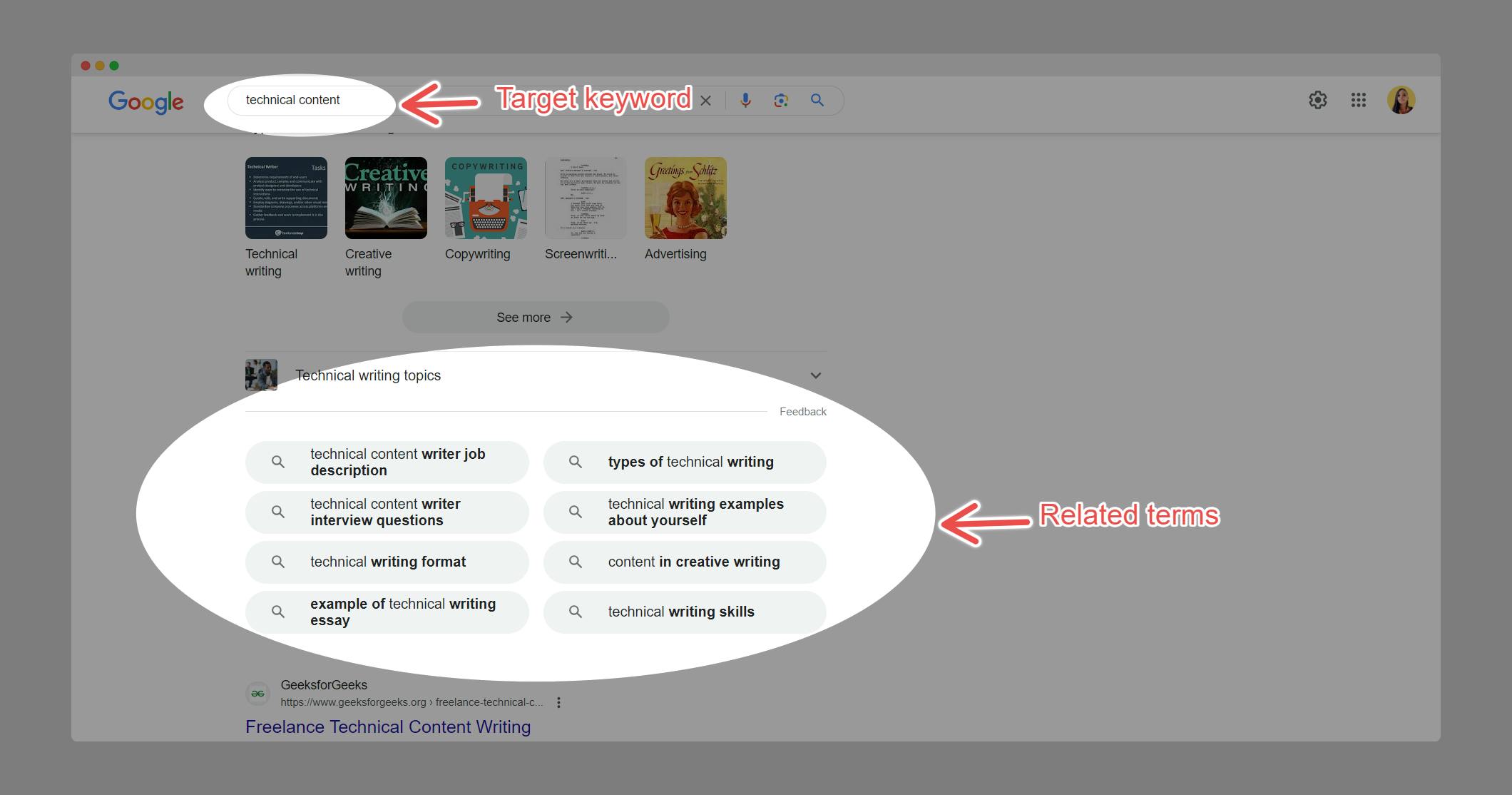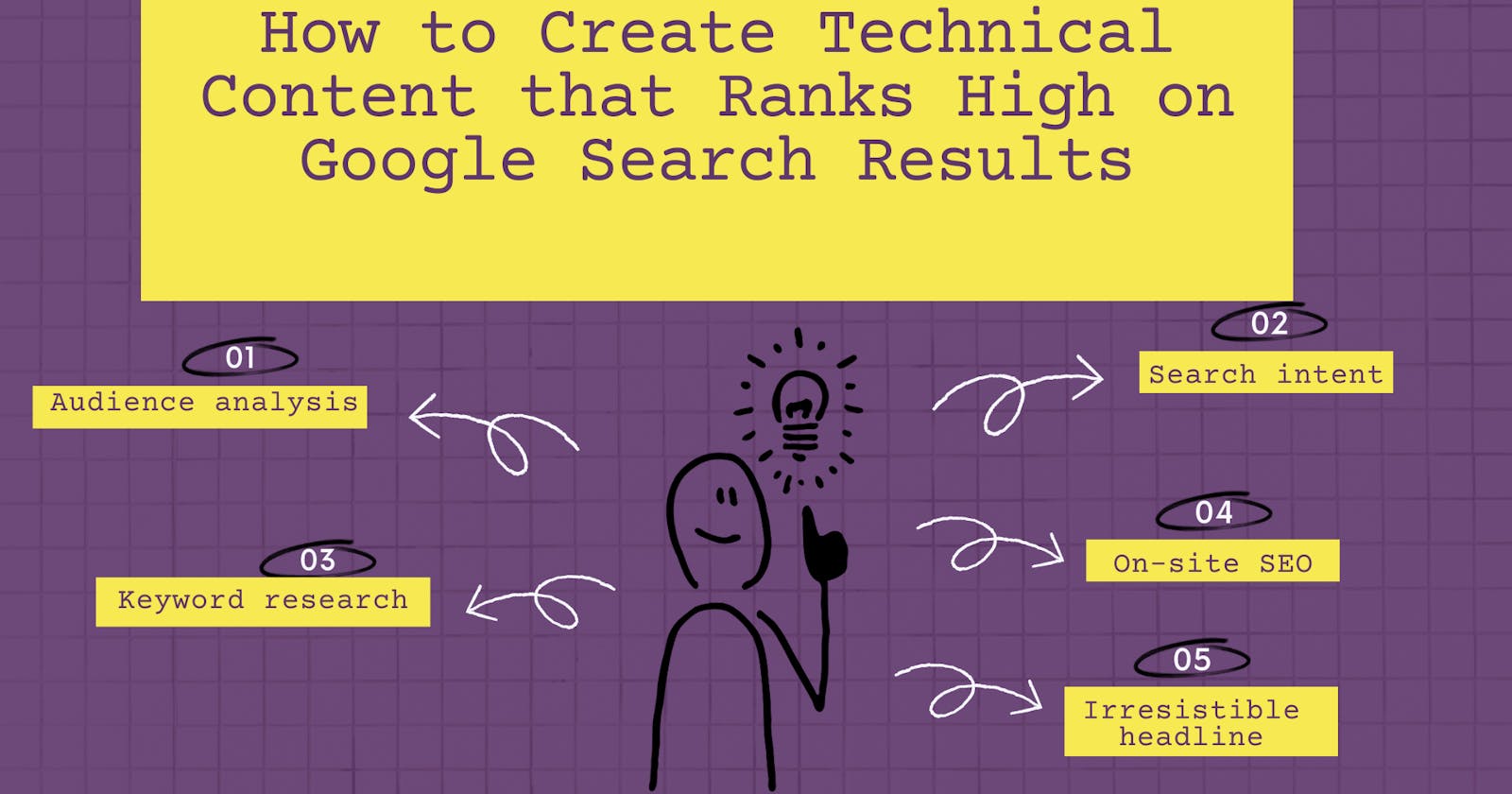How to Create Technical Content that Ranks High on Google Search Results
A step-by-step guide for beginners to write human-readable and bot-readable content.
When you search on Google, do you ever wonder why some contents appear on the first page and others on the fifth page? Out of curiosity, have you ever skimmed through the results on the 2nd, 3rd, 4th, and even the 5th page to see what's on those other pages?
You do not need to be an expert in Search Engine Optimization for your technical content to rank high on Google search results pages. With the five steps below, you can achieve this goal.
Understand your audience
Write with search intent in mind
Keyword research
On-site SEO
Irresistible headlines
Understand your audience
Technical documents should be written for a specific audience. Are you writing for beginner, intermediate, or advanced-level readers? Put yourself in your readers' shoes. What should they know? What do they want to know? Will they understand this content? What is the most effective way to communicate your ideas to them?
The right way to do this is to conduct an audience analysis. You need to answer the following questions:
Who is your reader? Are you writing for a global audience or a specific region?
What is the age or age range? What is their previous knowledge of your content?
What is their primary language?
What medium will they access your content?
Are they familiar with this medium?
How much knowledge about your content?
Are there any requirements to fully understand your content?
How motivated is your reader? Do they need enough information about the subject matter? Do they need just enough to solve a problem they encounter?
Write with search intent in mind
The next thing to focus on is the specific problem you are trying to solve. Is it relevant to your readers? It is necessary to determine the problem your content or document is solving and tailor it to your content.
Search intent or User intent is the main goal a user has when typing a word or phrase into a search engine. There are four categories of search intent:
Informational
Transactional
Navigational
Commercial
For instance, you visit your preferred search engine to find more information about a particular topic you just heard about. Your search intent is informational. This means you are learning something new and need more content and explanation.
It's commercial when you're researching the highest-quality laptops. Here you are still trying to decide which laptop to buy.
Another day, you want to know the price of a specific laptop. This is transactional; here, your intent is to purchase a laptop.
Here you can navigate to the website of a specific company by typing 'Facebook' or 'X'.
Why is this significant? Google prioritizes satisfying users' search intent. Your content ranks higher on Google if it satisfies search intent. What would your readers want when they type in the keyword you want to rank for?
In the next section, you will learn about keywords.
Keyword research
This is the process of identifying phrases or words known as keywords that people type into search engines when browsing. Your goal is to use these keywords in your document to rank higher on the Google search engine.
How do you conduct keyword research? If you already wrote out answers to the audience analysis and have identified the search intent this will be much easier for you.
Follow these steps to start your keyword research:
Understand your target audience and write out their pain points.
Know their search intent and write it down.
Type in your target keyword and scroll to the related terms section at the end of the page. This gives you a hint as to what users are searching for related to your keyword.

Use keyword research tools and select keywords with more volume and low competition.
Write out long-tail keywords with your chosen keywords.
Keyword research tools simplify finding and choosing target keywords. With these tools, you search for a keyword and it shows you related phrases and you choose based on your needs.
There are so many keyword research tools to use. Here are free tools.
For more information, see Keyword Research An In-depth Beginner’s Guide.
On-site SEO
This is also known as On-Page SEO. This is the process of optimizing your content for a higher ranking in Google search.
For writing, your focus should be on placing your target keyword(s) strategically in the following places:
Title tag
Meta description
Image file name and alternative text - This enables your images to rank in Google image search.
In the body
At least two H2 headings
Using irresistible headlines
One way to get users scrolling to click on your content is by using irresistible headlines. Follow these steps to write compelling headlines:
Convey a sense of urgency - Make your readers feel like they will miss out on something if they do not click on your content.
Get straight to the point - Use headlines that are very specific and do not need extra effort to understand what they will get out of reading your content.
Use personal pronouns like ‘You’ or ‘Your’.
Keep your words as short as possible.
Include digits at the start of the headline, and ensure to use ‘10’ instead of ‘Ten’.
Bonus tip - You don’t want to go through this long process of optimizing your content to get a high ranking only to create short, duplicate, or bad-quality content. This will waste all your efforts.
Creating high-quality content is
Long-form, accurate, and reliable content.
Include clear visuals.
Use headings, subheadings, lists, and whitespace.
Here is a sample of my article that ranks second in Google search results
For more information, see How to Rank Higher on Google In 2023.
CONCLUSION
It is no magic for your content to rank high in Google search results. It takes a lot of effort and intentionality.
Always write with your readers in mind. Every sentence, image, and other media should make communicating your ideas easy for your readers. Write concise and accurate content. With the step-by-step guide above, you are on your way to your goal.
Follow me on LinkedIn and Twitter for more updates on related topics💕.

